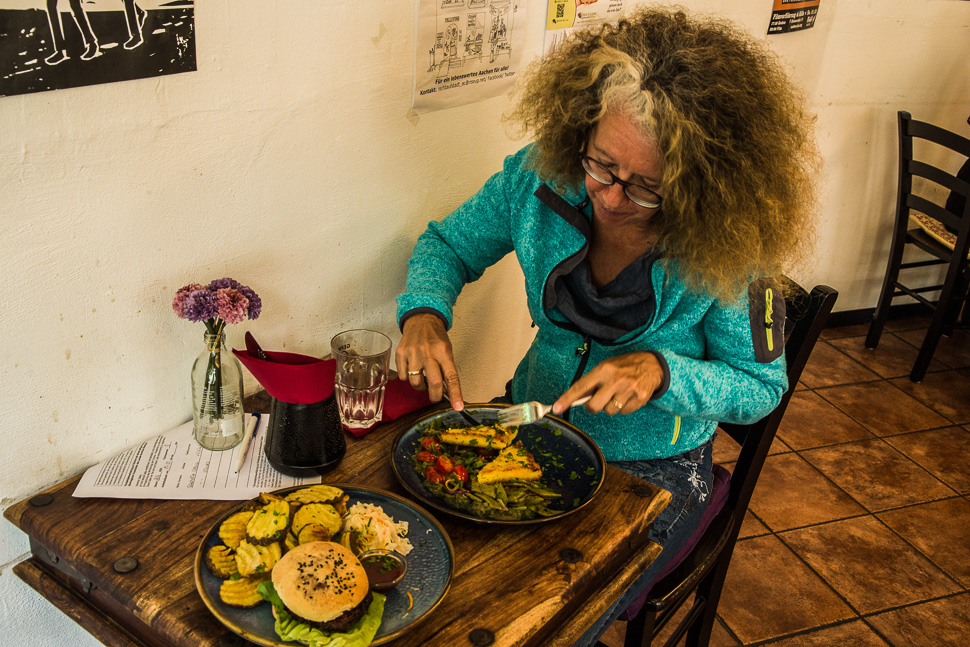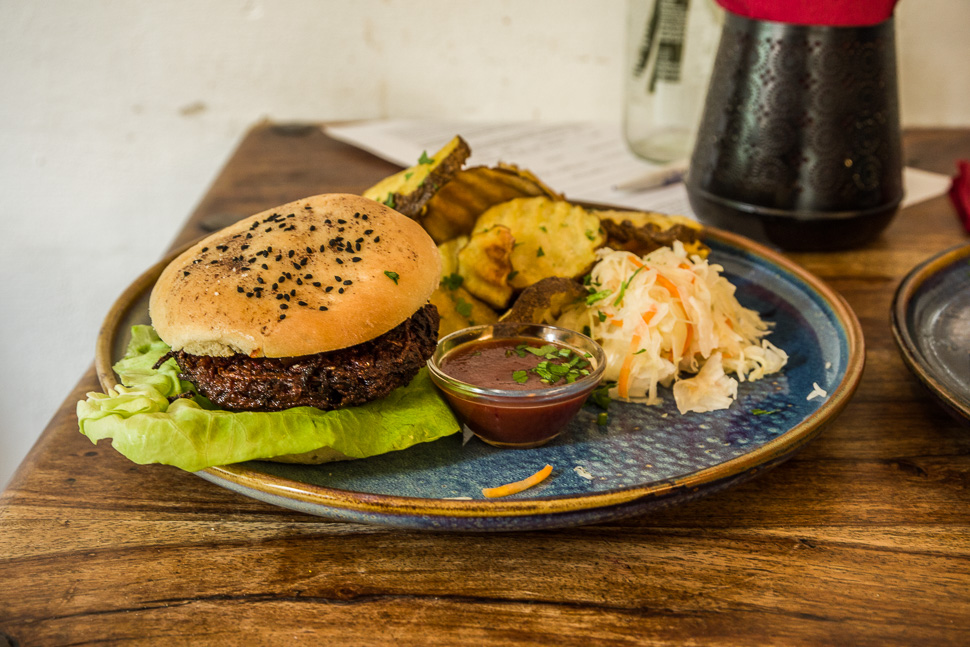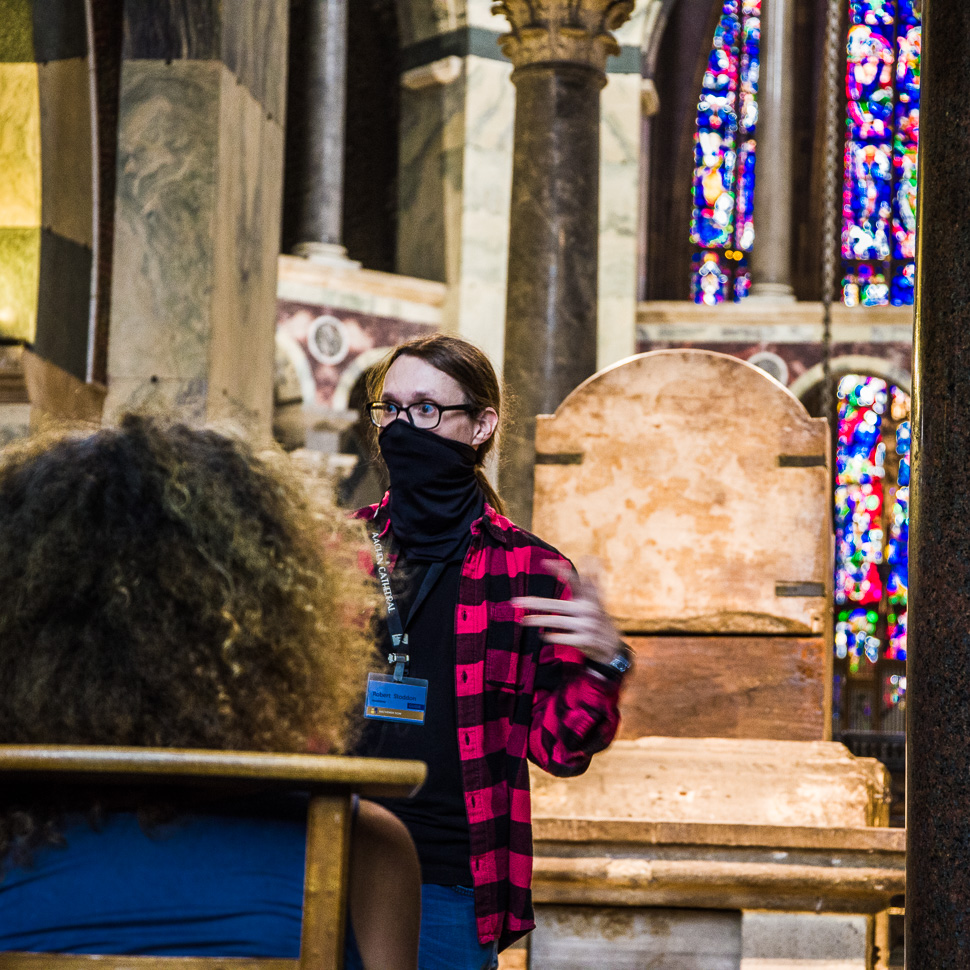 |
| Guided tour Corona version |
We had parked on the outskirts of the city in a very nice area next to a park, from where it was a 25-min walk into the centre. (50.761530, 6.071047)
Our recommendation: go straight to the information centre of the cathedral and buy a ticket for a guided tour. Otherwise, you are not going to see the important parts.
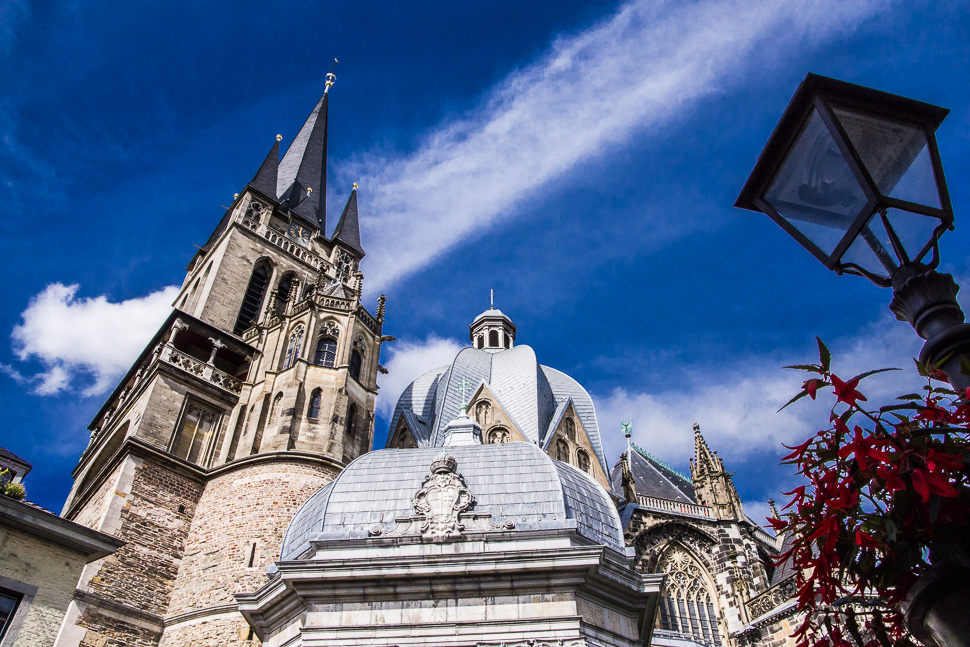
The Cathedral of Aachen is one of the oldest cathedrals in Europe. It was constructed by order of the emperor Charlemagne, who was buried there in 814. From 936 to 1531, the Palatine Chapel saw the coronation of thirty-one German kings and twelve queens.
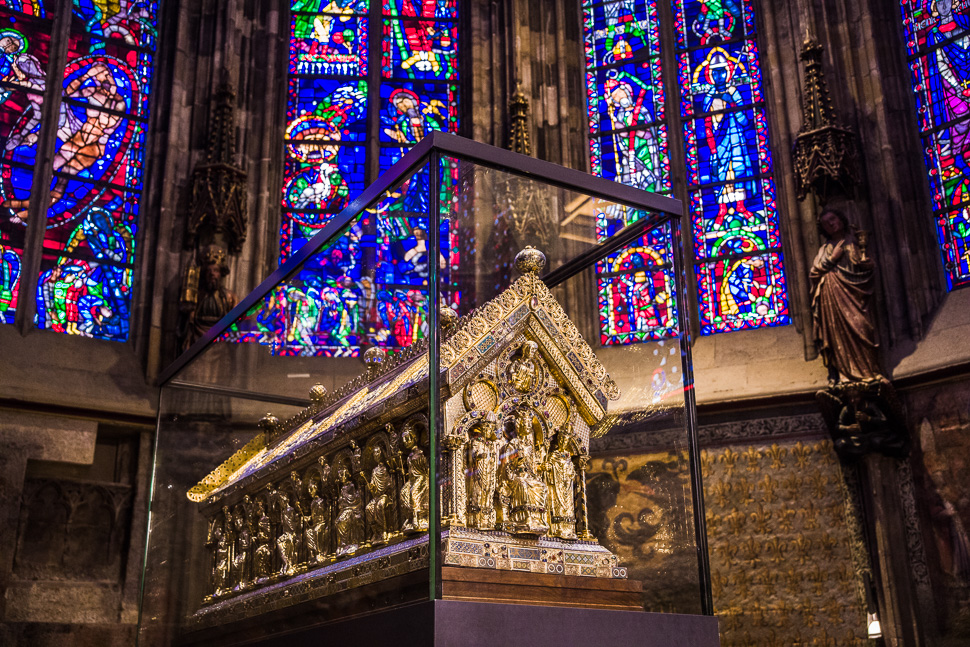
The Karlsschrein (Shrine of Charlemagne) contains the remains of Charlemagne. It was completed in 1215 in Aachen at the command of Frederick II, Holy Roman Emperor.
In 1874, the Aachen Stiftkapitel allowed a scientific investigation of the remains of Charlemagne. The investigation verified that the remains were authentic and proved that he was exceptionally tall for his time and lived to an unusual old age.
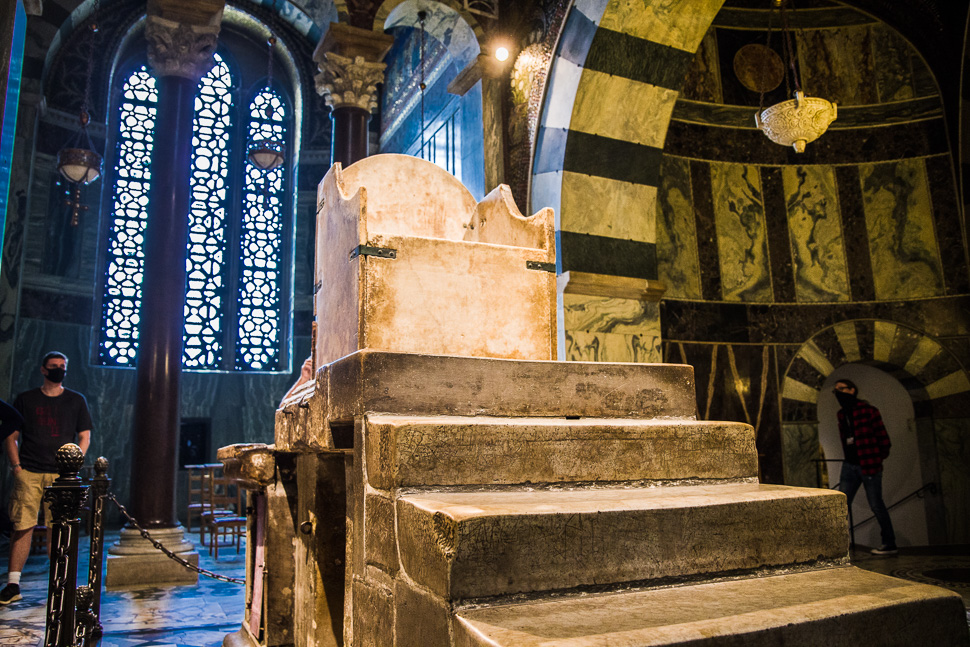
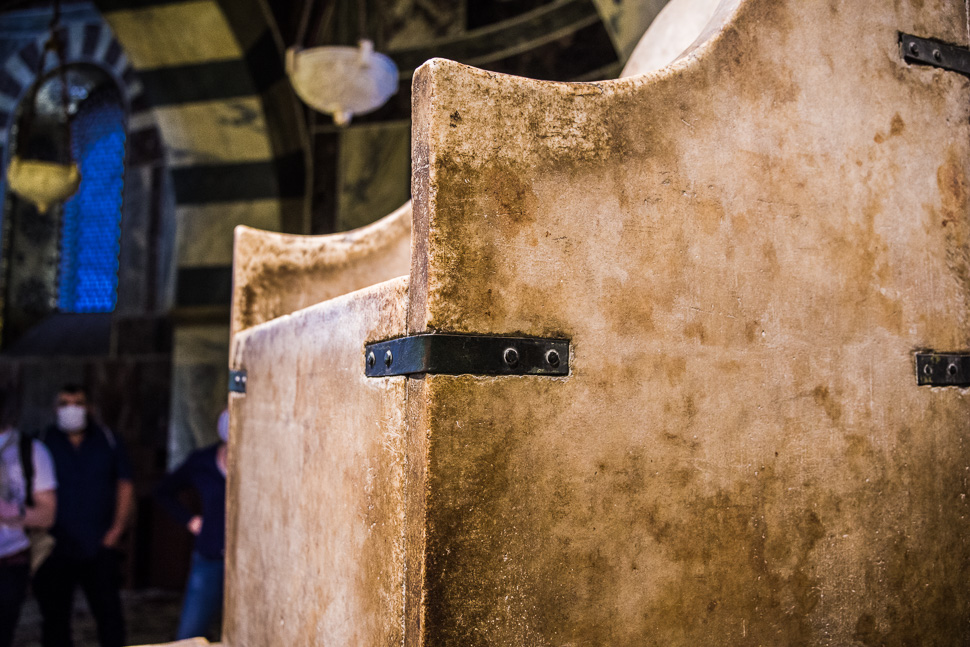

The original motive of the dome mosaic from around 800, with Christ as the triumphant world ruler surrounded by the symbols of the four evangelists, to which the 24 elders from the Apocalypse of John offer their crowns, was again executed around 1880/81 in Neo-Byzantine style by the Venetian workshop Antonio Salviati based on designs by Belgian architect Jean-Baptiste Bethune.
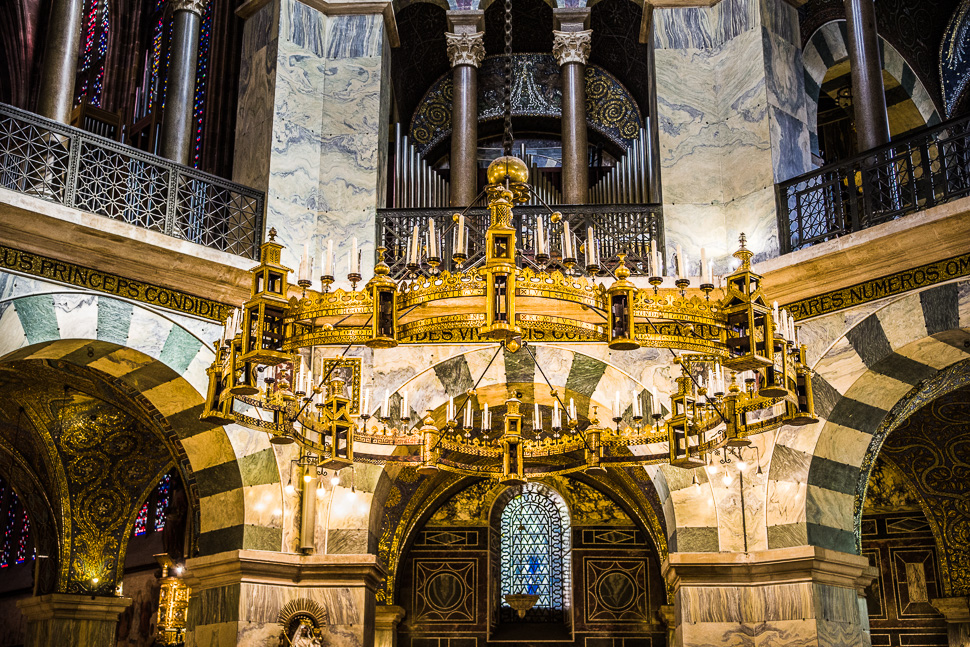
The Barbarossa Chandelier was made on the order of Emperor Frederick I, nicknamed Barbarossa, and his wife Beatrice sometime between 1165 and 1170 and was installed under the cupola of the Palatine Chapel. It was made of gilt copper in the form of a wheel chandelier. It has a diameter of 4.20 metres and is mounted on a roughly 27 metre long chain under the middle of the roof of the Palatine chapel. The circle of the wheel chandelier symbolises the city wall of the New Jerusalem. The stylised city wall of the chandelier contains eight large and eight small gate towers, which are arranged symmetrically.
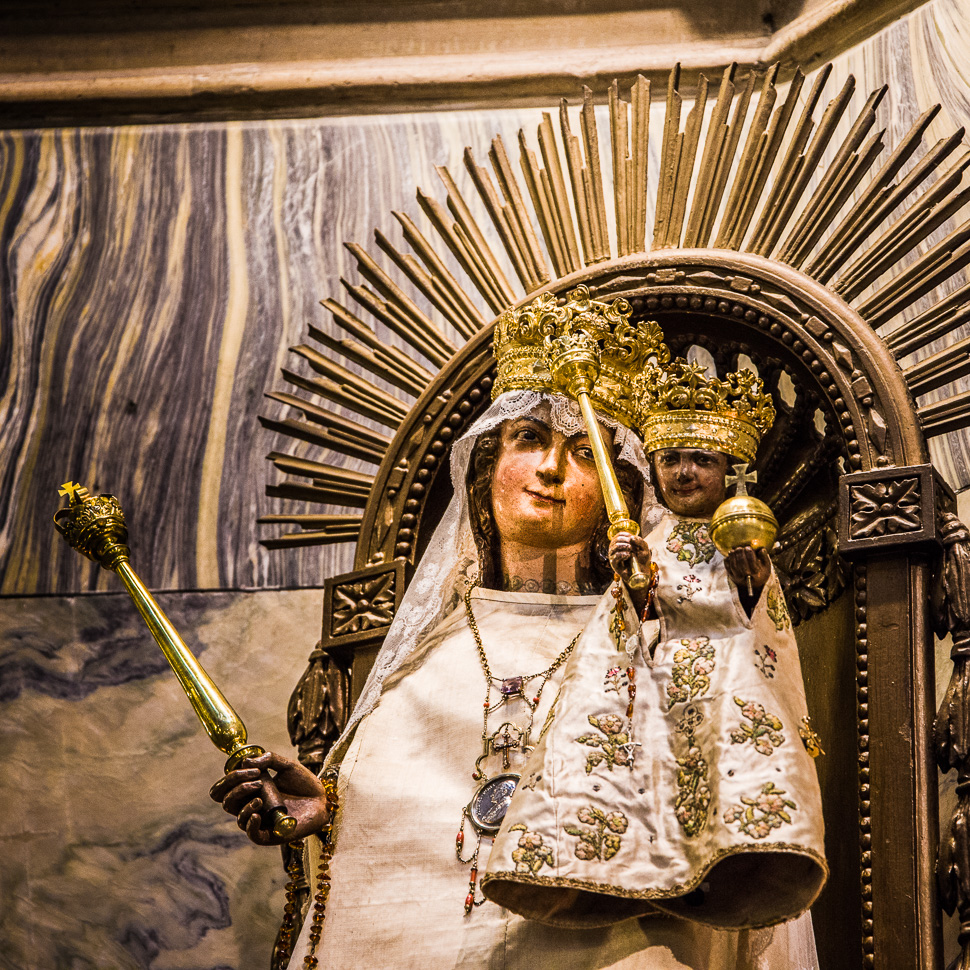
The worship of this image of grace has a centuries-old tradition in Aachen. In some cases, it is believed that a statue of the Virgin Mary has been highly revered in Aachen for almost a thousand years. Since the 15th century at the latest, Maria and the child have been wearing changing dresses. It is a tradition in Aachen that the Mother of God – often on special occasions – is given clothes and other jewellery. The oldest evidence of this tradition – and at the same time one of the most valuable pieces – is the crown of Margaret of York from 1461.
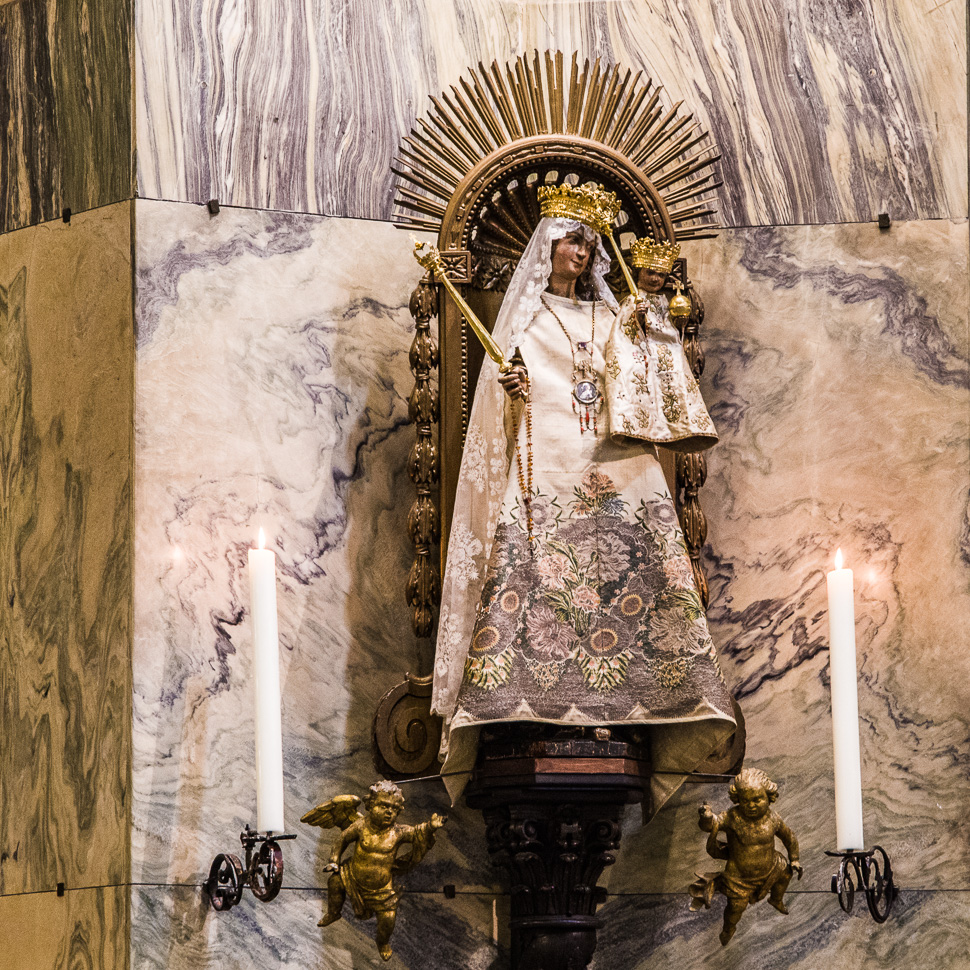
To this day, clothes and jewellery are given to the figure of Mary as a thank you for passing the exam, as intercession for survival in the war or for other reasons. She was also given earrings, pocket watches, perfume bottles or smaller gold bars.
Mary is dressed differently about a dozen times a year, so that one rarely comes to the cathedral and Maria wears the same dress. In 2007 Maria had 41 dresses and “several 100” pieces of jewellery.
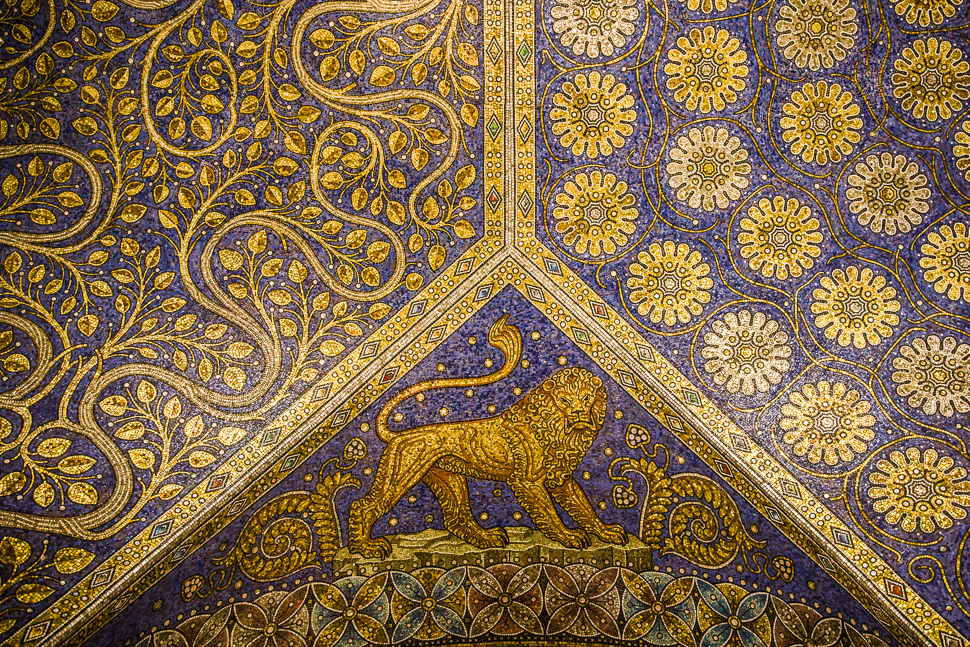 |
| Beautiful mosaics |
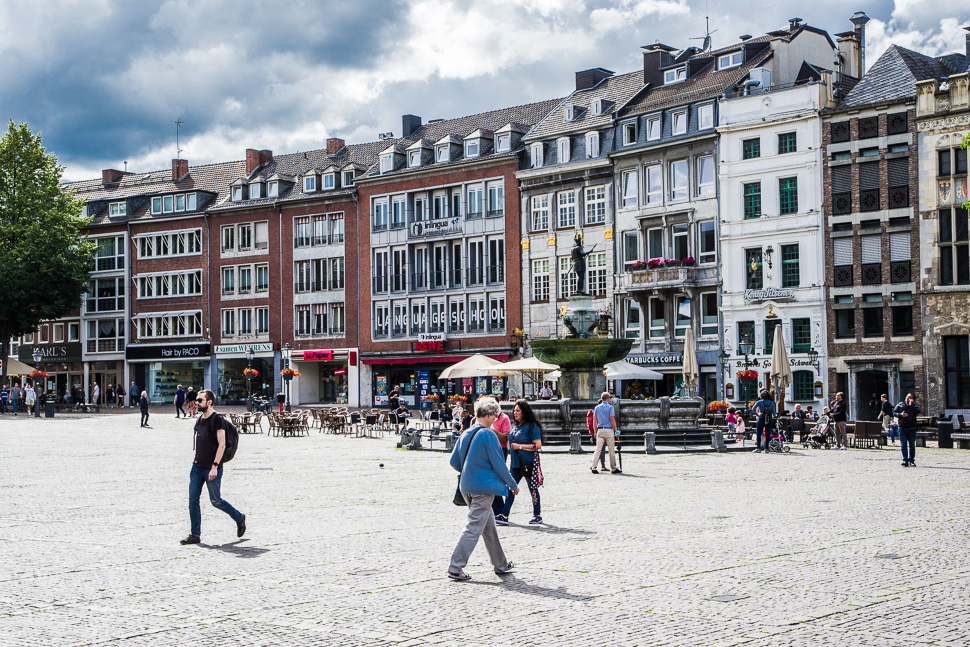
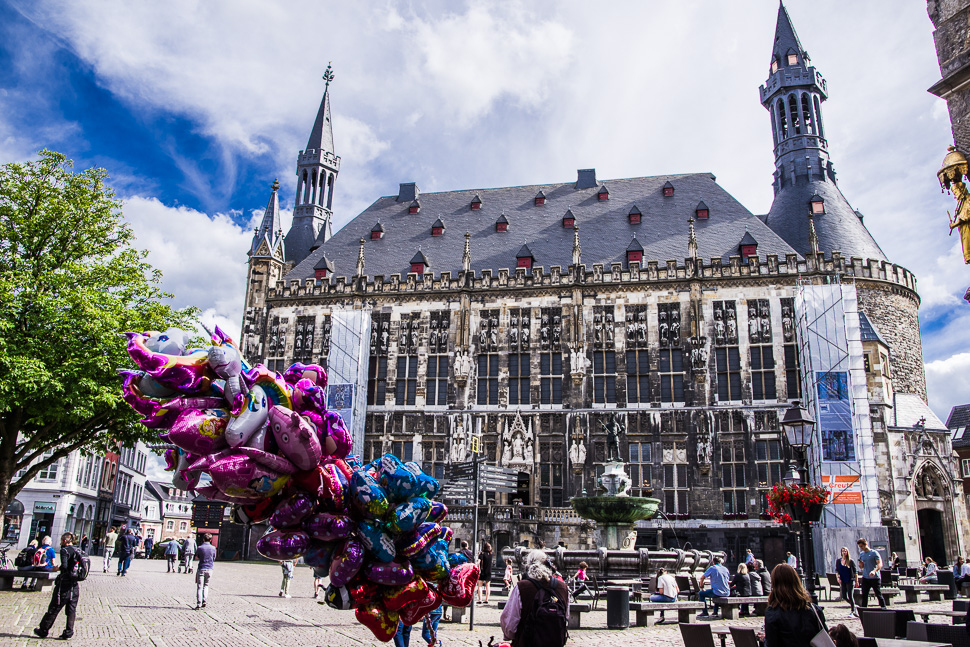 |
| City Hall of Aachen |
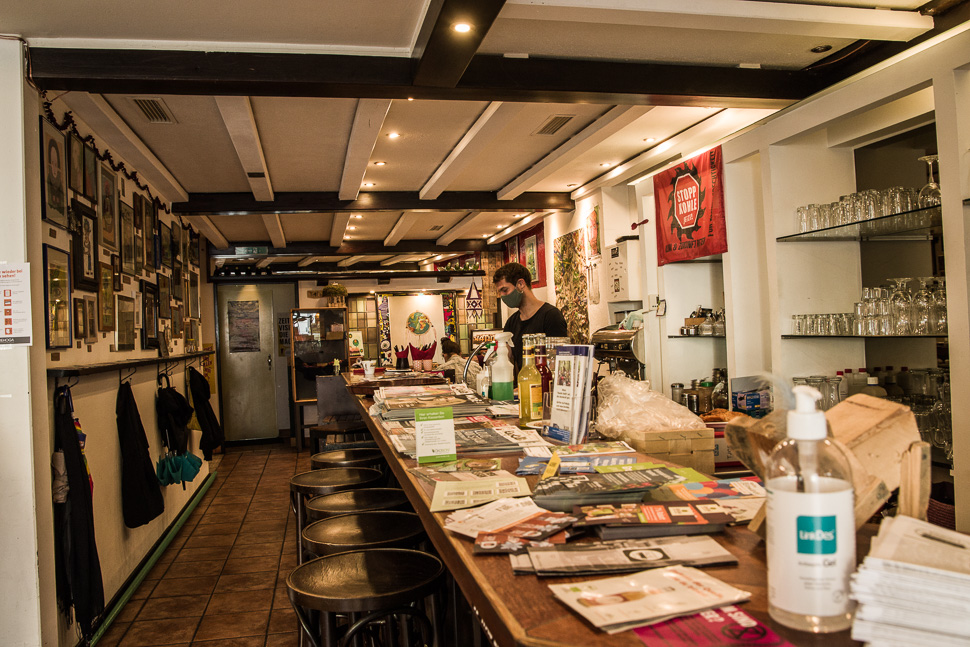 |
| Vegan Restaurant Pfannenzauber |
